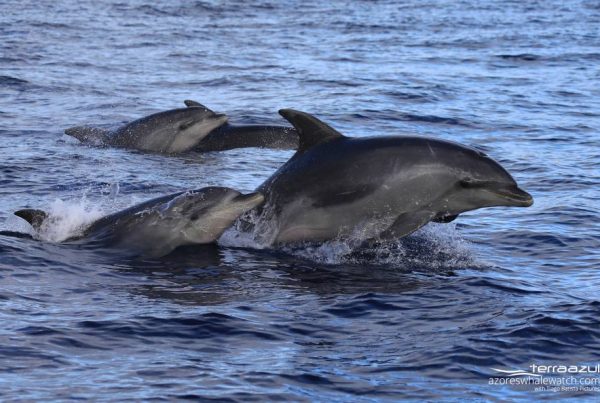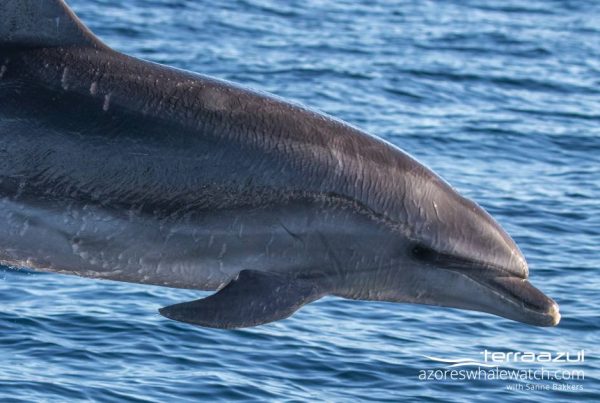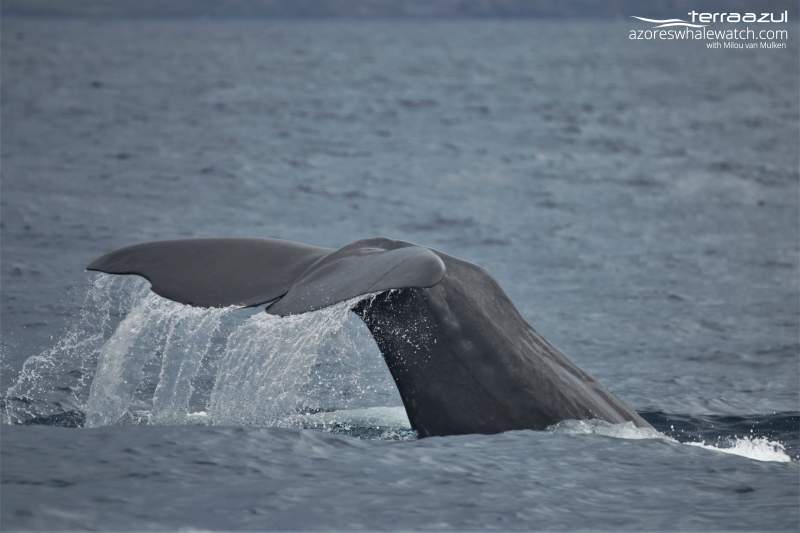
The huge groups of spotted dolphins are still around. Today we met two of them on our daily tour, both composed by adults, juveniles and calves. Most of them were foraging, but when we encounter such large groups it is often the case that not all individuals engage in the same activity at the same time. Part of the group was in fact busy socializing, with individuals in body contact showing their bellies and swimming one on top of the other, while the youngest component was once in a while breaching.
The presence of Atlantic spotted dolphins in the Azores seems to be correlated with the sea surface temperature, so until it will be warm enough for them they will be around for our joy. Usually by the end of October/November they leave in which case we will have to wait for the next year to see them again.
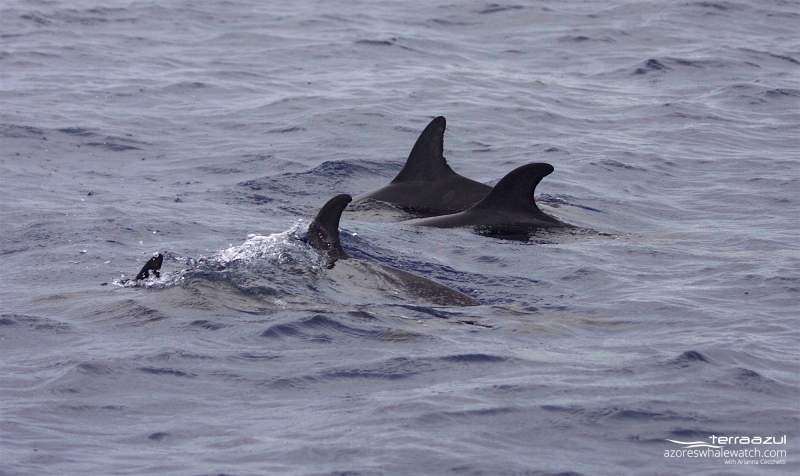
Socializing Atlantic spotted dolphins
The bottlenose dolphins on the other hand are hanging around all year-round and today we briefly met a nice group while foraging. Some individuals were breaching and later in the afternoon they were travelling and joined our boat while bow riding. The ever present Cory’s shearwaters were particularly active, surveying the surface and literally snorkelling to check below the surface, likely for some ball of fishes.

Bottlenose dolphin fast swimming in the middle of a feeding frenzy

“Snorkelling” Cory’s shearwaters 😀 A Bottlenose dolphin shadow is visible just below the seabirds
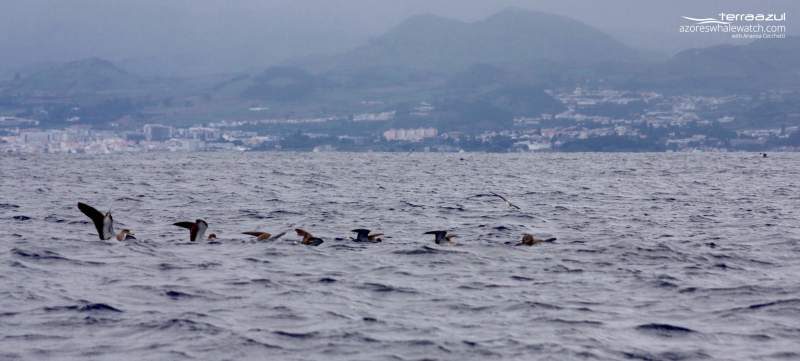
Cory’s shearwaters in line. Waiting their daily meal? 😉
We ended our day with two larger species: a huge sperm whale and a nice, but difficult sei whale!
The huge solitary sperm whale was very likely a male due to its size, as males can reach 18 meters, while females are on average 12 meters. Males also have a prominent head as we could see today, females on the contrary have a much linear shape. When we arrived we had to wait for about 10 minutes, after which the sperm whale came to the surface to rest for few minutes and eventually it took a deep dive, meaning for us a beautiful tail to see! 🙂
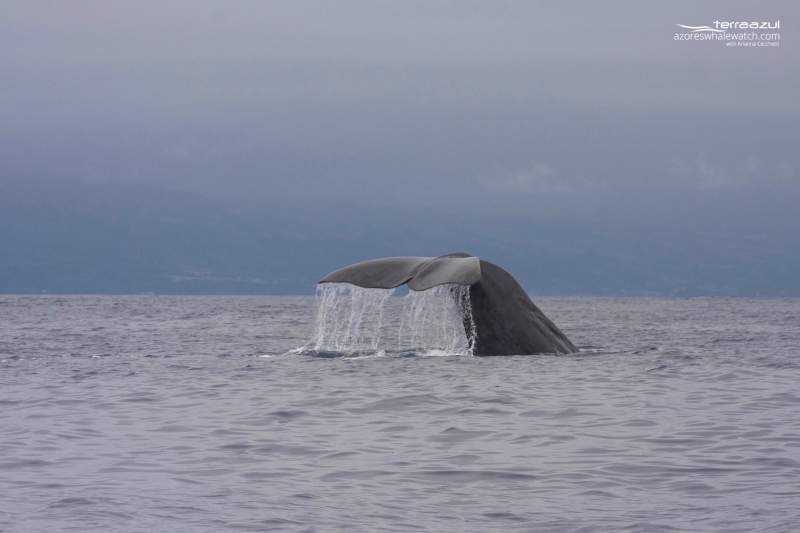
Fluking sperm whale
The sei whale was a bit difficult as it was visible at the surface for only short time. This made us appreciate even more such an unpredictable and still poorly known species.
Baleen whales are observed in the Azores in spring and Autumn while they migrate, however, the sighting frequency tend to be higher during spring. This year, we are registering quite a lot of sightings also at this time of the year.
So, what are you waiting for? Let’s enjoy together such wonderful wildlife! 🙂












